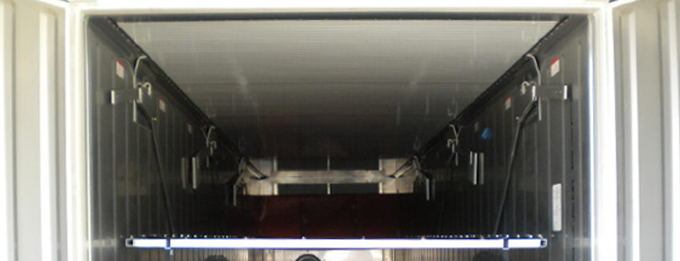
Fighting The Good Fight: How AFE Systems Inhibit Bacterial Growth
May 28, 2022Microorganisms and bacteria may be small, but they are responsible for billion-dollar losses each year to the food industry. Far worse is the human cost— bacterial infections caused by Salmonella, Campylobacter, and Escherichia Coli are responsible for 9 out of 10 food-borne diseases in the world today. It is vitally important that science equip the food industry with the ability to inhibit bacterial growth.
Fortunately, multiple technologies (both physical and chemical) have been developed to control unwanted microorganisms in food production and storage.
HEAT
Heating is one of the most common means of microbial control, killing microbes by altering their membranes and denaturing their proteins. Heating methods fall into two categories: dry-heat sterilization and moist-heat sterilization. Dry heat can be applied for relatively long periods using a dry-heat sterilizer or oven. Moist-heat sterilization, such as boiling, is extremely effective because moist heat penetrates cells deeper than dry heat and is extremely effective at killing microbes, vegetative cells, and some viruses.
Pasteurization
Pasteurization is another method of controlling microbes in food using heat without rendering the food completely sterile. It involves applying high heat for the shortest duration of time needed to kill most pathogens and spoilage-causing microbes, in cases where fully sterilizing the product would ruin food quality.
COLD
Refrigeration
High temperature is one way to control microbial and bacterial growth, but low temperature is another. Refrigerators used for this purpose typically maintain temperatures that inhibit the metabolism of microorganisms, slowing their growth and delaying spoilage.
PRESSURE
Exposure to high pressure kills many microbes. In the food industry, high-pressure processing (also called pascalization) is used to kill bacteria, yeast, molds, parasites, and viruses in foods while maintaining food quality and extending shelf life.
DESSICATION
Drying, also known as desiccation or dehydration, has been used for millennia to preserve food. It works because all cells, including microbes, require water for their metabolism and survival.
Freeze-drying, or lyophilization, is one method of desiccation in which an item is rapidly frozen (“snap-frozen”) and placed within a vacuum, so water is lost by sublimation.
The water content of foods and materials can also be lowered by the addition of chemical solutes such as salts or sugars. At extremely high concentrations of salts or sugars, the amount of available water in microbial cells is severely reduced, stunting microbial growth.
Sterilization can also be achieved through chemical means (by using chlorine dioxide gas, phenol derivatives, guanidine compounds, and hydrogen peroxide gas).
Other methods of sterilization include targeted exposure to microbe-killing radiation.
AFE: What We Offer
AFE’s sanitary designs and construction practices provide the industry with the most hygienic solutions available. AFE’s unsurpassed hygienic and sanitary equipment designs far exceed industry standards for sanitization and dependability. Our dedication to uncompromising food safety has inspired AFE’s use of purpose-designed enclosures, innovative pasteurization systems, UV irradiation ability, and chemical desiccation options—all of which combine to raise the bar on food production safety.
Our fully welded enclosures and fully welded penetrations, constructed from state-of-the-art microbial resistant materials, better ensure the absence of voids and diminish potential points of bacterial harborage. Our enclosures also come with the industry’s only 10-year warranty—our guarantee that they will get the job done.
AFE recommends pasteurization as part of your sanitation strategy. AFE’s Pasteurization System can heat to 78 degrees Celsius (173 Fahrenheit) to pasteurize, and our equipment can safely and reliably bring the internal temperature of our insulated enclosures up to 160 F° (71 C°), easily maintaining the required temperature for the desired time based on a client’s GMP’s.
Our equipment also uses PurFlo, a UV-C air purifying system that irradiates microorganisms such as bacteria, fungi, and viruses, eliminating them with shortwave UF light.
Contact us to work with you in developing your food safety strategy today!